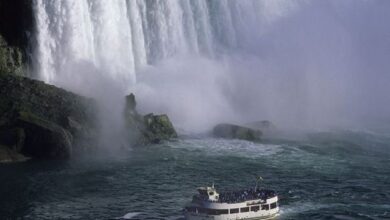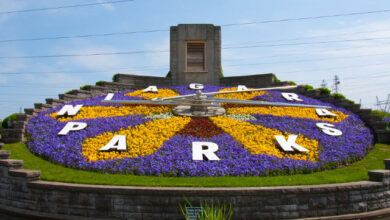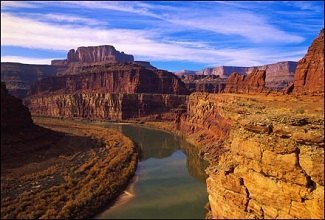History of San Francisco

Brief History of San Francisco Summarized
We review the brief summary history of San Francisco.
The principles of San Francisco
Before the arrival of Europeans, two groups of Native Americans lived in the San Francisco area, the Ohlone and the Miwok. They were hunter-gatherers and lived by hunting animals, fishing, and gathering shellfish and nuts.
Francis Drake anchored his ship at Point Reyes in 1579, but failed to discover San Francisco Bay. Much later, in 1769, Gaspar de Portola led a Spanish expedition overland and found the bay.
Then, in 1776, Juan de Anza led a group of settlers to the San Francisco Bay and they built a fort called the presidio. In 1797 a mission was founded.
San Francisco in the 19th century
In the early 19th century, whaling ships and merchants arrived in the bay. Then, in 1821, Mexico (which included California) broke away from Spain and became a republic. Then, in 1828, Jedediah Smith crossed the Sierra Nevada mountains to reach the San Francisco Bay.
An Englishman named William Richardson founded a settlement on the San Francisco Bay in 1835. He called it Yerba Buena. During the 1830s and early 1840s many Americans came to live in the new settlement.
Then in 1846 the US annexed California. On July 9, 1846, the USS Portsmouth set sail for San Francisco Bay, where sailors and Marines disembarked and raised the American flag. The small settlement of Yerba Buena was renamed San Francisco (after the bay) on January 30, 1847.
At that time San Francisco only had a population of about 800. However, in 1848 a man named James Marshall discovered gold. News of the find reached New York in December 1848. As a result, people flocked to San Francisco by the thousands, and the population grew. In 1849 the population of San Francisco reached 25,000 inhabitants.
However, on May 4, 1851, San Francisco was devastated by fire. However, the city was soon rebuilt. The San Francisco waterworks began in 1857.
However, by 1853 the gold boom was ending. Then in 1859, Henry Comstock discovered silver. Unlike gold, silver required expensive equipment to extract, so various “silver barons” were the main beneficiaries. Meanwhile, entrepreneurs dreamed of a transcontinental railroad. It was completed in 1869.
In the late 19th century, San Francisco continued to develop. The first cable car service began on Clay Street in 1873. Meanwhile, in 1870 San Francisco had a population of nearly 150,000. By 1900 San Francisco had a population of over 300,000.
San Francisco in the 20th century
However, on April 18, 1906, around 5:15 in the morning, an earthquake shook San Francisco. It measured 8.25 on the Richter scale and caused widespread devastation.
However, the fires that followed caused even more destruction. They were furious for three days. Some 28,000 buildings were later destroyed and 250,000 people were left homeless. The exact number of dead is unknown. However, after the earthquake, San Francisco was rebuilt.
Meanwhile, San Francisco suffered an outbreak of bubonic plague in the years between 1900 and 1904. It killed 113 people. San Francisco suffered an outbreak of bubonic plague between 1907 and 1909. This time 190 people died.
Many large new buildings were built in the early 20th century. The Hallidie Building was built in 1917. Saints Peter and Paul Church was built in 1924. Coit Tower was built in 1933. Work on the Golden Gate Bridge began in 1934 and opened on May 27, 1937. (Tragically, shortly before it opened, 11 construction workers were killed).
In May 1934, longshoremen in San Francisco went on strike. On July 5, 1934, known as Bloody Thursday, fighting began between police and strikers. Two of the strikers, Nick Bordoise and Howard Sperry, were killed.
In 1912 a military prison was built on Alcatraz Island. In 1934 it became a civilian prison for “incorrigible” prisoners. Alcatraz prison closed in 1963. In November 1969, Native Americans took over the island in protest. They left in 1971.
Alcatraz is now a very popular tourist destination. During the 1950s San Francisco was known for the Beatniks. In the 60’s it was known by hippies. Today it is known for its gay scene.
In October 1989, an earthquake measuring 7.1 on the Richter scale struck San Francisco, killing 9 people. Then in 1992, fire swept through the Oakland hills, destroying 3,000 homes.
San Francisco today
San Francisco is a growing city today, as well as a multicultural city. Its peoples include Hispanics, Chinese, Japanese, and Filipinos. The population of San Francisco is almost 1 million inhabitants.
Share the brief history of San Francisco summarized.


